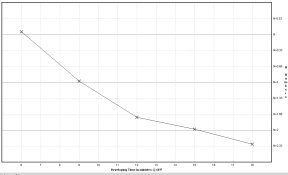kinderhookphotog
Member
- Joined
- Nov 15, 2014
- Messages
- 7
- Format
- Medium Format
Hi
I'm getting back into analog photography after many years away and I'm geeking out with my btzs test. I just performed my first test film test with TMAX 100 in D76 1:1 @68 degrees. I bracketed the development times based on a (apparently mistaken) notion that 12 minutes would produce "normal" development.
I'm getting some odd results from WinPlotter, however, which seems to claim that 6 minutes in "normal" development time! This is completely confusing and I'm wondering if I perhaps might have a problem with old D76 (about a month) that has been stored in wine bottles with the air sucked out of them.
Are there any BTZS geeks that might check out my curves? I'm going to run a second test using 9 minutes as the mean dev time but I'm wondering if anyone else had thoughts about these results or could share curves with the similar combo of film & developer.
Thanks,
August
I'm getting back into analog photography after many years away and I'm geeking out with my btzs test. I just performed my first test film test with TMAX 100 in D76 1:1 @68 degrees. I bracketed the development times based on a (apparently mistaken) notion that 12 minutes would produce "normal" development.
I'm getting some odd results from WinPlotter, however, which seems to claim that 6 minutes in "normal" development time! This is completely confusing and I'm wondering if I perhaps might have a problem with old D76 (about a month) that has been stored in wine bottles with the air sucked out of them.
Are there any BTZS geeks that might check out my curves? I'm going to run a second test using 9 minutes as the mean dev time but I'm wondering if anyone else had thoughts about these results or could share curves with the similar combo of film & developer.
Thanks,
August













